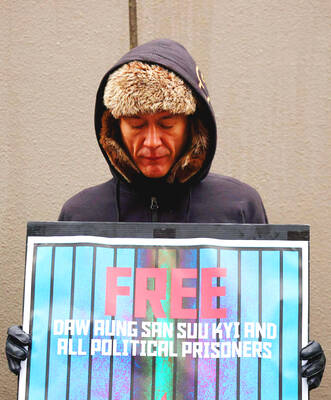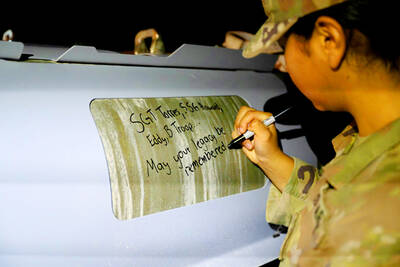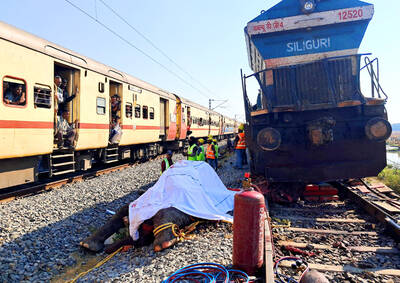Some people get so excited when they talk about capital letters that they become breathless. Anita Samen, an editor of the new 15th edition of the Chicago Manual of Style, published this month, is one of them.
"I am so excited about this manual I can't even talk!" Samen said, interrupting herself on the phone the other day as she was describing the proper use of regular size and smaller size capital letters. (More about that later.)
"Heads are spinning," Samen said, among those authors, editors and publishers who regard the Chicago Manual as the bible of printing style, grammar and punctuation.
It has been 10 years since the last edition of the manual, which is published by the University of Chicago Press. That one has sold 500,000 copies.
The new one is the most significant revision since the 12th edition in 1969. It is the first edition, for instance, to address electronic publishing seriously. It also has the manual's first chapter on grammar and usage, written by Bryan Garner, with instructions on whether it is all right to use "and" and "but" at the beginning of a sentence. "And" has been OK since Chaucer's time, Garner said.
"The shibboleth persists that it isn't," he said. But the great grammarian H.W. Fowler, author of Modern English Usage, called it "a monstrous doctrine," he said. Garner, himself the author of A Dictionary of Modern American Usage, did a study on the issue. "Ten percent of sentences in first-rate writing begin with `and' or `but,'" he said.
The new manual is a result of 10 years of queries and suggestions from readers. "We used to take style questions over the phone," said Samen, who is also managing editor of the books division of the University of Chicago Press. "I always thought we should make it a 900 number."
Showing how that might go, she lowered her voice seductively: "You want to use a hyphen there? Ooooo, that's very naughty!"
The editors also placed queries on Internet discussion groups used by writers, publishers and copy editors. The process was coordinated by Linda Halvorson, the press' editorial director for reference books, and Mary Laur, the reference division's project editor.
For the first time, the manual had an advisory board with representatives from the academic world, publishing and the electronic communications industry -- among them, the Shakespearean scholar David Bevington of the University of Chicago; Mary Knoblauch, the recently retired writing coach of The Chicago Tribune; June Smith, president of the college division of Houghton Mifflin; and John Hevelin of Sun Microsystems.
The final decisions were made by a team of some 20 representatives of departments of Chicago Press, including production, design and information systems.
Not surprisingly, given the passionate nature of editors, there were disagreements along the way. A big one, Samen said, was about hyphens and dashes. There are three kinds. The biggest are "em" dashes and are used to set off explanatory phrases like, "My friends -- that is, my former friends -- ganged up on me." The middle-size or "en" dashes are traditionally used to connect a range of things, like "the July-August issue of a magazine." The smallest, the hyphens, are used in compound words like "a tie-in for a television show."
Maybe it was time, Samen suggested, to retire the middle-size one. It wasn't necessary anymore, she said, and it didn't aid comprehension. But no. Samen's idea was met with strong opposition from people on the Internet discussion groups. Finally, in an e-mail message (spelled with a hyphen in the Chicago Manual), Samen capitulated.
"I surrender!" she wrote to another editor. "I'm the only managing editor on the planet who does not looooove the en dash!"
The manual had its beginning 100 years ago when typesetters at the University of Chicago Press wrote up a list of dos and don'ts. The first edition was published in 1906. It had some endearing advice. Page 99: "Read everything as if you yourself were the author, and your reputation and fortune depended upon its accuracy." On the same page: "Don't stultify yourself and discredit the office by asking foolish questions on the proof." (All editors take note.)
And on Page 100: "As for authors, typographically they very often do not know what they want until they see it in type and not always then." Point taken.
Among the major changes in the new manual:
Capital letters. The old manual recommended using small capitals in some cases, like AM and PM. But it is difficult for writers on a word processor to switch from regular size capitals to smaller. "In the new edition we now prefer lower case a.m. and p.m., with periods in between," Samen said, "and we are saying small caps are an alternative."
Ordinal numbers. The Manual used to prefer 3d and 2d, but it is now OK to use 2nd and 3rd, "like the rest of the world," Samen pointed out.
Dates. Previous editions recommended the British style: 1 July 2003. Now one can write them "the way everybody does it in real life," Samen said: July 1, 2003.
Inevitably the manual reflects social change. One of the biggest problems was how Web addresses should be written. Web sites are increasingly used by authors as sources of information for books and articles.
"There is no totally received wisdom about how to cite electronic sources," said Halvorson, the press' editorial director for reference books.
The problem, she said, is that Web addresses change constantly. "That was the thing people got most exercised about," she said. There was a debate on whether to include full or shortened addresses, or URLs.
"In the end, we decided it was in the interest of people being able to track down sources to include full URLs," she said.

The Burmese junta has said that detained former leader Aung San Suu Kyi is “in good health,” a day after her son said he has received little information about the 80-year-old’s condition and fears she could die without him knowing. In an interview in Tokyo earlier this week, Kim Aris said he had not heard from his mother in years and believes she is being held incommunicado in the capital, Naypyidaw. Aung San Suu Kyi, a Nobel Peace Prize laureate, was detained after a 2021 military coup that ousted her elected civilian government and sparked a civil war. She is serving a

REVENGE: Trump said he had the support of the Syrian government for the strikes, which took place in response to an Islamic State attack on US soldiers last week The US launched large-scale airstrikes on more than 70 targets across Syria, the Pentagon said on Friday, fulfilling US President Donald Trump’s vow to strike back after the killing of two US soldiers. “This is not the beginning of a war — it is a declaration of vengeance,” US Secretary of Defense Pete Hegseth wrote on social media. “Today, we hunted and we killed our enemies. Lots of them. And we will continue.” The US Central Command said that fighter jets, attack helicopters and artillery targeted ISIS infrastructure and weapon sites. “All terrorists who are evil enough to attack Americans are hereby warned

Seven wild Asiatic elephants were killed and a calf was injured when a high-speed passenger train collided with a herd crossing the tracks in India’s northeastern state of Assam early yesterday, local authorities said. The train driver spotted the herd of about 100 elephants and used the emergency brakes, but the train still hit some of the animals, Indian Railways spokesman Kapinjal Kishore Sharma told reporters. Five train coaches and the engine derailed following the impact, but there were no human casualties, Sharma said. Veterinarians carried out autopsies on the dead elephants, which were to be buried later in the day. The accident site

‘EAST SHIELD’: State-run Belma said it would produce up to 6 million mines to lay along Poland’s 800km eastern border, and sell excess to nations bordering Russia and Belarus Poland has decided to start producing anti-personnel mines for the first time since the Cold War, and plans to deploy them along its eastern border and might export them to Ukraine, the deputy defense minister said. Joining a broader regional shift that has seen almost all European countries bordering Russia, with the exception of Norway, announce plans to quit the global treaty banning such weapons, Poland wants to use anti-personnel mines to beef up its borders with Belarus and Russia. “We are interested in large quantities as soon as possible,” Deputy Minister of National Defense Pawel Zalewski said. The mines would be part